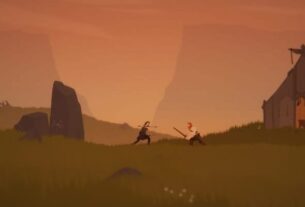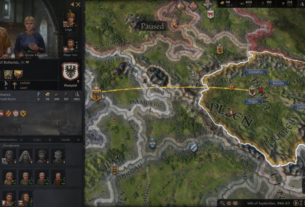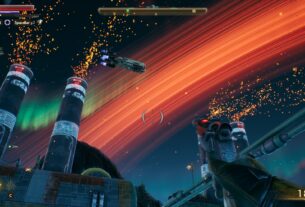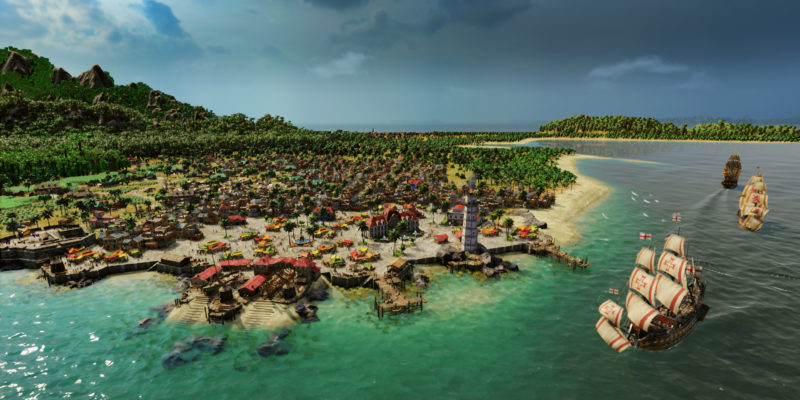
Port Royale 4 is a trading/economic management game set in the Caribbean during the Age of Sail. It’s from developer Gaming Minds Studios and publisher Kalypso Media. Truth be told, my experience with the Port Royale franchise hasn’t been that extensive. I’ve only played the first couple of games in the series, and only in passing (I didn’t delve into them too much). Thankfully, the core concepts in Port Royale 4 would remind you of other titles that you might’ve tried out. Examples include the Patrician franchise, Rise of Venice, and the somewhat recent Anno 1800.
During the course of my Port Royale 4 playthroughs—a quick campaign as Spain and an attempt at “free mode” also on the side of Spain (I guess that’s just the colonial mentality talking since I’m Filipino)—I noticed a few quirks that made certain portions shine. Sadly, there were several issues that need mention.
Trading opportunities
In the simplest terms, Port Royale 4‘s mechanics revolve around “buying low and selling high.” First, you’ll select one of four nations (Spain, England, France, or the Netherlands). Then, you’ll pick a character class. My favorite happens to be the Merchant.
Because this is a trading game, I found the class easier to use since you won’t need a license just to play with the markets. Heck, you could even trade with nations you’re at war with. The end goal, of course, is to amass a ton of riches. In turn, the gold you acquire is used to purchase permits and construct town improvements.
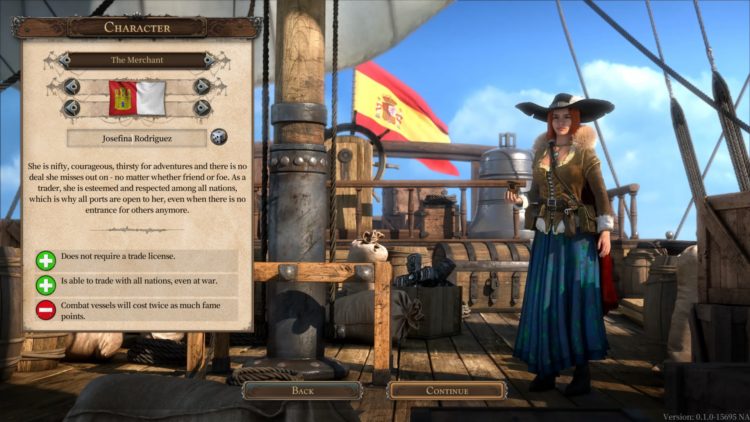
Anyway, there are roughly 60 towns from the tip of Brazil to the coast of Florida, including every island and peninsula in between. The scale of the map is quite immense (which is supposed to be a positive thing). Next, clicking on each town shows you the raw materials or handicrafts being produced as well as the supply and demand. So far so good, right?
Since Port Royale 4 primarily focuses on trading and economics, it allows you to trade via a couple of means: manually clicking on towns so you could pick up and sell goods in other places, or creating automated trade routes. The former is self-explanatory. For the latter, you can assign a convoy that buys ABC product/raw material that goes to XYZ town. Then, you’d customize a variety of factors such as how much gets purchased and how the ships navigate choppy waters. The map even shows you wind directions, shoals, and areas that are prone to storms. These are to help you plan your trade route—ie making sure your convoy always sails downwind to speed up the process. Again, these are decent features to have.

Panel after panel
However, things take a turn for the worse once you realize how you’d navigate Port Royale 4‘s systems. The user interface is just problematic and unintuitive. It starts with the panel for a settlement’s resources being separated from trade routes. Although the trade routes show a town’s produced resources via a cog icon, it doesn’t necessarily show what it lacks. Therefore, you’re looking at checking the town panel, making note of the resources that are “in the red” (the ones that are insufficient), switching back to the trade routes panel, clicking on the town, and selecting “sell” for that particular resource. Multiply this for each town that’s part of a trade route, and you’ve got a logistical nightmare on your hands.
It’s like the game expects you to have a good memory as, otherwise, you’re going to need to recheck several resources more often than you should. Yes, Port Royale 4‘s automated trade routes mechanic—one that’s supposed to alleviate tedious micromanagement—already has that brand of tedious micromanagement while you’re creating said trade routes. Our own Martynas Klimas covered these mechanics for a preview build back in May, and I’m surprised that there weren’t a lot of improvements that were done in time for the release.
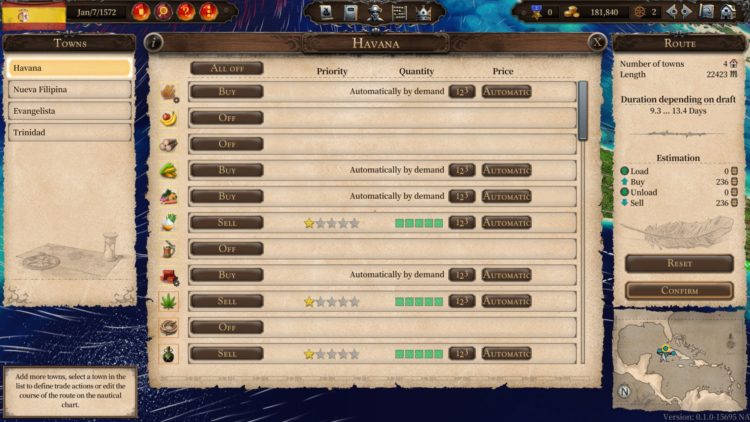
The only positive that can be gleaned from this is that, once you finally have a trade route running, you could leave it as is. The AI is smart enough to automatically buy and sell what’s needed based on your input. Again, that’s a good thing, although, be forewarned that when there are dozens of settlements owned by your nation (such as Spain), it’s a pain to try and get on top of things.
Worse, I was expecting user-friendly features such as ledgers, lists, or panels that allow you to quickly select towns (sort of what we’ve seen in strategy games like those from Paradox Interactive). Unfortunately, there’s none of that sort in Port Royale 4. If you want to check resources, you’ll need to click on a magnifying glass icon that simply highlights towns with a particular raw material or amenity on the campaign map.
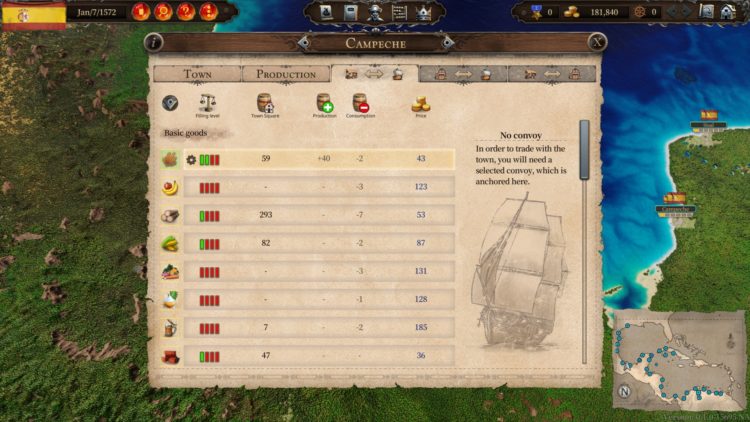
Port Royale 4‘s visual details
Speaking of the campaign map itself, I found the layout adequate. As mentioned earlier, there are 60 towns all over the Caribbean. The overhead view when fully zoomed out shows you extremely tiny ships darting back and forth, with the Americas covered by lush, green forests. Zooming in, meanwhile, gives you a more scenic view of your surroundings. It’s akin to what you’d see in Anno 1800 or some of Paradox’s recent grand strategy games like Hearts of Iron IV and Crusader Kings III.
Regrettably, there were also a couple of issues here. Primarily, it has a lot to do with performance. With an Intel i7-7700k CPU and an Nvidia GTX 1070 Ti GPU, choosing the 4K UHD resolution and normal graphics quality had Port Royale 4 chugging along at a measly 30 FPS (sometimes lower). If you could imagine how slow galleons sailed across the Atlantic Ocean in the 1500s, then you’d probably get that feeling here due to the low framerates. Likewise, the textures of the towns themselves don’t look as vividly rendered as I’d hoped they’d be. Compared to Anno 1800 (which, to be fair, has a stronger focus on town/city growth and citizens), Port Royale 4‘s settlements look very outdated.
Anyway, speaking of slow sailing across the sea, game speed is determined by multipliers on the upper portion of your HUD as well as the zoom level. Zooming out means time speeds up faster, and the inverse is also correct. So, if you’re looking to immerse yourself by exploring and seeing the panoramic views, you’re going to have to do that while zoomed in and with the game slowing down to a crawl. At best, you’re going to want to hasten things lest you fall asleep. Oh, and there’s a box you could tick to have zoom level no longer affect the game speed, but this doesn’t work at all.
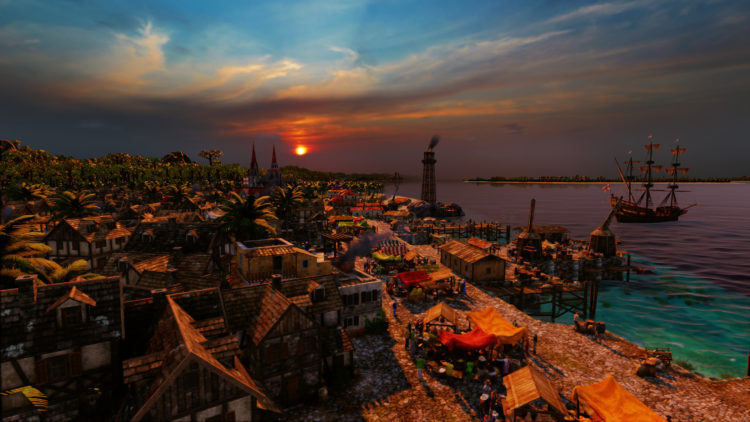
What else is there to do?
I’m reminded of Sid Meier’s Pirates! (and its 2004 remake). Whimsical as it may have been, you’re always searching for something, exploring new locales, creating a ruckus with your sailors, finding treasure (or your lost relatives), hunting pirates (or being one), and making lots of doubloons along the way. Port Royale 4 has a semblance of these, sure, albeit fixtures that get boring and rudimentary after a few hours.
There are missions that’d pop up as star icons on town nameplates. Additionally, you could find a message in a bottle that contains a part of a treasure map. For the settlement missions, most of these are your “bring X resource to this town” fetch quests or “find this missing castaway in Y area.” The former is quite simple (and you’ll likely do manual trading here). The latter can be a nuisance — there are instances when those objectives are easy to complete and moments when you could search all around an area until the mission’s timer ran out. Since the game progresses faster only when fully zoomed out, you’re looking at tiny ships looking for tiny dots and markers. Fancy that.
Apart from random missions, you’ve also got tasks that appear in your journal and those from your nation’s viceroy. More often than not, these are just your standard “construct X number of buildings in this town” or “send X number of resources here” activities. Rewards for some tasks and missions include tactics for naval battles and fame points. Fame points are used to acquire concessions from the viceroy and these are either perks (i.e., increased settler growth), extra buildings that can be constructed (i.e., large shipyards), or captain recruitment.
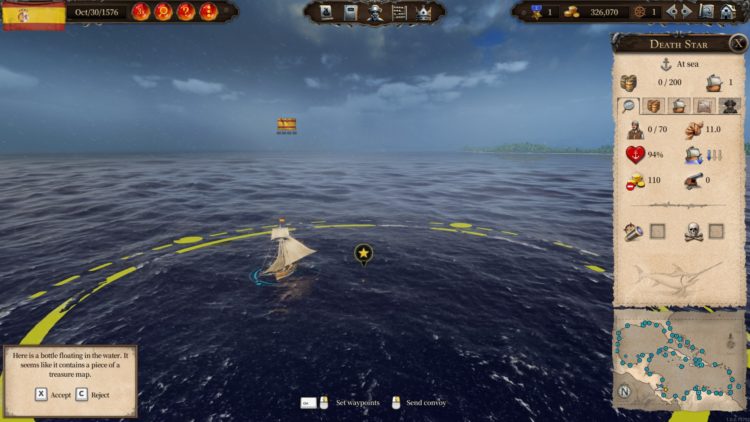
Naval naptime
Since we’re on the subject of captains and naval battles, you might want to know that Port Royale 4‘s naval combat is a turn-based tactical affair. Vessels are moved on hexes and each ship has two broadsides per turn (one for the starboard side cannons and one for the port side cannons). You also need to consider movement points not just to be used on hexes, but also when turning your ship in various directions so you can fire said broadsides.
Naval combat becomes quite dreary because of the slightly slower pace. You pick one of your ships, then the AI picks one of its own, you bombard one another until one fleet is sunk to the bottom of Davy Jones’ Locker. Let’s not forget that, visually, it’s not as exciting as it should be. In terms of audio, you’ll only hear the campaign map’s music, the occasional burst of cannon fire, and maybe some chirping birds. Another thing that surprised me was that, even though I was eliminating pirates who were ransacking my towns, the towns themselves don’t offer any form of support despite having cannons.
Lastly, there’s an annoying bug that sometimes completely prevents your military convoy from moving once you click on a hostile on the campaign map. It’ll say that an attack was initiated, but your convoy will remain in place. As such, I sometimes found myself manually going to a destination and then switching to “patrol mode,” hoping that a pirate passes by while my ships are docked. It’s a really clunky system.
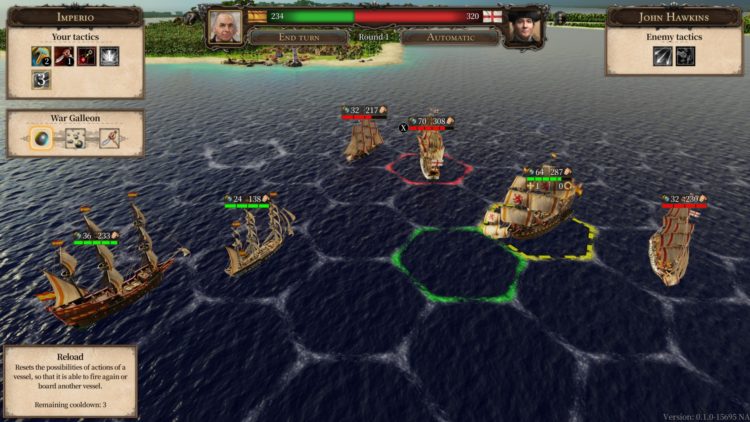
Not so smooth sailing
I encountered a few other hurdles in Port Royale 4 that I just couldn’t figure out at times. One of those has to do with a town’s growth. Towns not only require a permit and fame for you to construct buildings, but they also need more workers. The drawback is that most workers and colonists will only come from the viceroy’s base (one of the cities on the map that acts as a capital). Bringing new people to your towns isn’t fully automated so you’re looking at meandering “recruitment drives.” Take your convoy to that capital, pick up sailors, and drop them off at a town; lather, rinse, and repeat for other settlements.
Constructing community or production buildings are locked behind requirements that are, consequentially, locked behind the number of people living in a location. I found the system so unintuitive and cumbersome that, halfway through, I just gave up. I started hoping that the AI and automated trade routes would help those areas develop without my input. Likewise, there was a bug that caused my income to drop severely after constructing new buildings. I eventually disabled the usage of these buildings for a short while (one in-game day) just to prevent sudden bankruptcy.
In the end, I found Port Royale 4 a fairly tedious experience to get through. Even “free mode” didn’t excite me as much, since the core mechanics remained problematic. Automation via trade routes was a chore to initiate, and, once you’ve done that, there was very little to look forward to. Sure, there were tasks, but they’re far from interesting. My manual escapades consisted of the aforementioned recruitment drives, random missions, grabbing a piece of a treasure map, and naval battles that lacked excitement.
If you do plan on grabbing Port Royale 4 on Steam, be aware that it might not be smooth sailing ahead. Zooming in, slowing down, and taking in the scenic sights might be pleasant. Unfortunately, like a vessel lost at sea, the bigger and broader journey will feel rudderless.
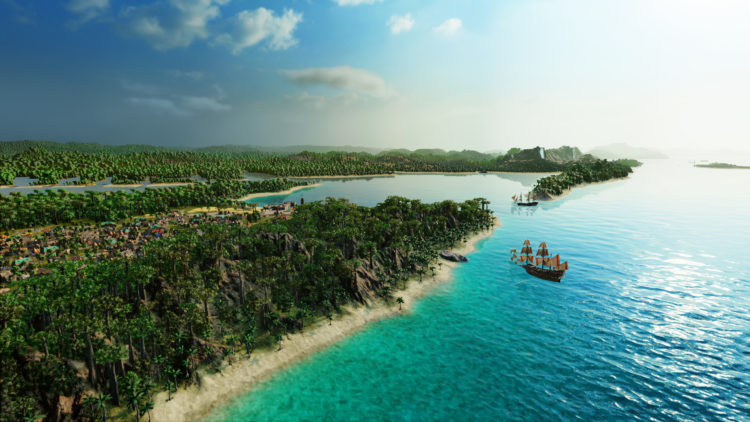
Port Royale 4
Port Royale 4 might have quirks that are interesting at a glance such as automated trade routes and a vast map. Looking closer, you’ll realize that its core mechanics are cumbersome and unintuitive, its naval battles are plainly uninteresting, and there’s not a whole lot that would seem enticing. It lacks all the dynamism despite a time period known for swashbuckling excitement.

